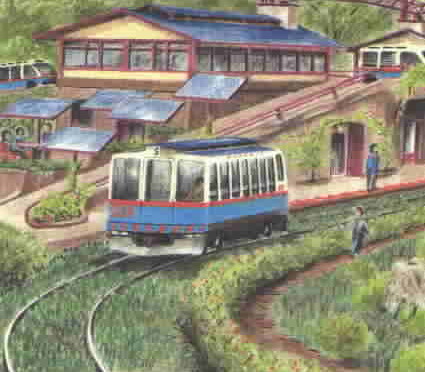Developers need a new strategy
Dwayne Hunn
Article Launched: 03/25/2007 11:05:29 PM PDT
Marin Independent Journal
HERE WE GO AGAIN. Roughly every decade, the county updates its general plan. Not many pay attention. Those who do usually have a perceived problem with something in it.
If you build homes or commercial space, you pray you don’t have a project in Marin.
Why? Because in Marin, developers can’t win for losing.
Developers propose building substantial affordable and workforce housing, whose marketability they prefer, and what happens? A political fear machine scares elected officials who further slash housing densities. Developers are forced to build mega-estates, with just a few deeply subsidized workforce units. Then, the public blames them for the lack of affordable housing.
Developers are willing to work with those of us who develop workforce housing and push for mixed-use European villages along the rail line, but are rebuffed by groups parading as environmentalists. Had rail-oriented mixed-use developments been built at Vintage Oaks, Hamilton and the St. Vincent’s School for Boys-Silveira Ranch sites (seemingly losing to the illogical minuscule-development myopics) our freeway would be less congested, workforce more balanced, train ridership solidified and, in our interconnected world, oil addiction a little less deadly for our troops.
What’s a winning strategy for developers? It’s similar to what the Bush administration needed for Iraq.
Developers need to build a coalition of landowners, affordable housing advocates, businessmen, etc., and build a vision that captures hearts and minds. After getting some media attention, the vision must be good enough to capture the belief of the too-busy, but still thinking, activists of both counties.
That is doable with a comprehensive development scenario that truly delivers good development, not merely mouths it. Unfortunately, when you have public officials overly influenced by scaremongers offering falsehood and simplicities, you do not develop smart, healthy programs.
Scaremongers have won most Marin battles by twisting facts and ignoring logical, visionary answers, while scaring politicians and citizens into buying into shortsighted nonsense.
What is some of the nonsense that scaremongers have foisted on too-busy people and politicians?
– That each new general plan has too much population growth, developable land, affordable housing and commercial space,
– That each general plan must be dramatically reduced so as to save our quality of life. This is said in California’s oldest median-age county where about 88 percent of its land is protected, only about 5 percent can have some development, and population growth has averaged about 3/10th of 1 percent per year for the last three-plus decades.
– That the Bay Area Association of Governments unfairly calls for too much affordable housing because Marin doesn’t have enough developable space.
– Therefore, the answer is to do less of everything in this new general plan update.
Consequently, each successive general plan fails to reach its goals. Then, the next general plan lowers it goals for previously unmet affordable housing, population, land use, transit oriented development, etc.
The scaremongers have developed a self-fulfilling decreasing development loop that hurts neighborhood, city, county, state and nation by scaring Marin residents into buying a small-minded view of how one of America’s wealthiest counties should be.
Developers, of course, are not faultless. They continue to fail to provide a vision of environmentally sensitive developments that feed mixed-use rail-oriented villages that should have been built for decades along North Bay rail lines.
By failing, they failed to build an army of supporters. Had they articulated that vision, in conjunction with supporting unobjectionable to all in-fill development, developers might reverse their long Marin retreat, and maybe save Baghdad. Oops, wrong battlefield.
Had pedestrian-pocket developments been built over recent decades, fewer would buy into scaremongering about “quality of life, my property values, parkingÉ”
If developers had built the vision and army, there would be fewer complainers sniping at the general plan’s social and housing benefits. Oh, yeah. Had that happened, Marin would be cutting our oil-trafficking addiction and reducing the underlying pretext for bleeding our troops in Baghdad.
wonrerase?
Dwayne Hunn consults on land development projects and is Executive Director of People’s Lobby, sponsor of the American World Service Corps Congressional Proposals.
- Developers need a new strategy
- Collected wisdoms on why Marin housing is so expensive:
- Federal bay refuge simply is too much
- A ’golden opportunity’ for whom?
- Preservation proposal is elitist
- St Vincent’s is a rare opportunity
- ‘Smart’ planning needed in Marin
- I see San Rafael in 2020, and it works
- 10 questions for San Rafael
- Oh, God, have mercy on our failures
- …but, from where I sit, they’re part of the problem
- Downzoning can punish community
- With no train can we really clean…
- All aboard! The future…
- Marin, why not think ‘regional’?
- Apathy never fixes anything
- Marin power/a closer look
- Pedestrian Pockets II
- Interviewing Angelo Siracusa — Bay Area Council boss
- Pedestrian pockets
- Everyone wants transit?
- NEH, NBTMA, County letters on Hamilton Proposed Development
- Traffic reducing proposals
- Points in favor of Hamilton
- Building a better Marin
- Rail/Highway alternative best with development “pockets’
- East San Rafael’s needs
- Address our housing needs
- Visionary Leaders needed
- Innovations at Novato’s Skylark project

